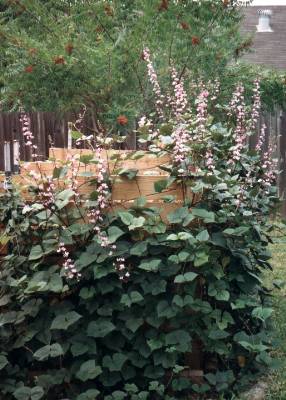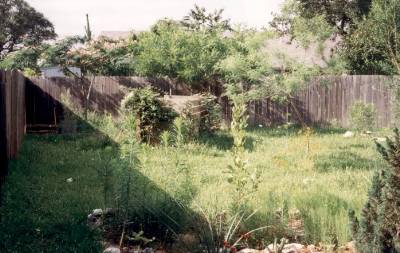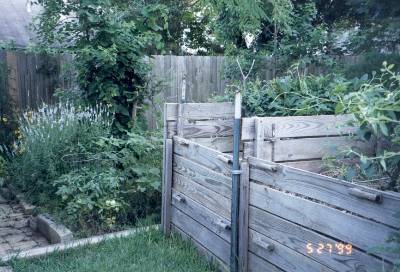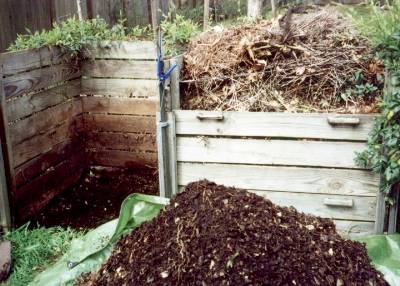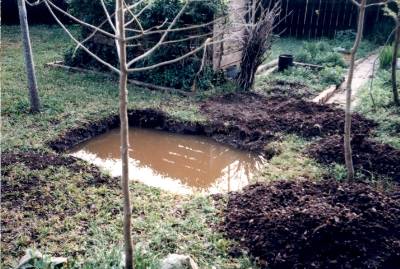Garden Gallery 6
Compost Bins and Big Pond
|
As an aid to our gardening and yard improvement efforts, we built the compost bins sometime around 1993. They hold a tremendous amount of debris and the resulting mulch has been the main way in which we have improved the soil in our gardens.
As soon as the compost bins were finished, we decided to plant vines around them to make use of all that vertical bare wood structure. The first year we put in hyacinth beans, which did very well because they received full sun much of the time. The above photo was taken in 1993. The vines are assisted by pieces of string nailed onto the boards. The tree behind the bins is a very short-lived sumac that provided shade for only a few years before it died.
Since hyacinth beans must be treated as annuals in our climate, we needed something more persistent. The 1994 photo above shows the bins with their more permanent cloak of honeysuckle, started from a single small sprig. In the very corner of the yard, a young mimosa is starting to take over the chore of producing shade.
When the above photo was taken in 1999, the bins still received plenty of morning sun but the red oak just to the right provided shade in the afternoon. The back corner mimosa was now a substantial tree and a second mimosa can be seen on the far left of the photo. The sizeable hole next to the oak tree would soon accommodate the big pond.
The above photo shows the design of the doors for the bins. Metal fence stakes anchor the bins and there is a landscape timber border around the work area just to the left. At this time, we were still sometimes growing vegetables in some of the gardens. Some small tomato plants can be seen in the back corner garden next to the bins. The upright blue flowers behind the tomatoes are slender vervain.
For the first time since they were made, the bins were recently packed to capacity after not being emptied for two years. The photo above shows them in Feb., 2003, when one bin was overflowing and the other needed to be emptied. With no place to put the debris from the left bin, we spread a tarp on the ground and dumped it all there. At this time of year, the compost was far too wet to sift and use, so we moved the top of the contents of the right hand bin into the emptied left one and mixed in the pile on the tarp. A couple months later, sifting of the right bin could proceed.
In the autumn of 1998, we dug out the space for the big pond. Although it looks pretty good as a natural lake, the water would only remain a few days after very heavy rains. Due to delays from weather that was too wet, too dry, too cold, and too hot, not to mention work schedules and indecisiveness about just how to build the pond, it was not finished until nearly a year later. The three trees visible in the above photo are, left to right, a red oak, a bald cypress, and a Chinese tallow.
The pond, shown above in 2003, now contains quite a variety of water plants, including a water lily, water hyacinths, water lettuce, salvinia, arrowroot, and several species of submerged plants. It also contains a large population of mosquito fish, snails, and aquatic insects, as well as a yearly brood or two of toad tadpoles.
|
